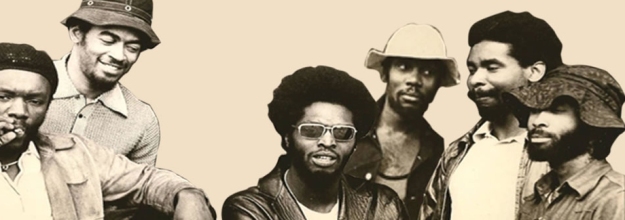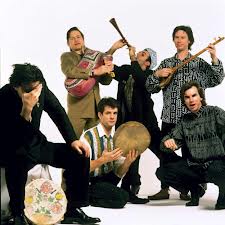I was never a huge fan of punk rock. But some of the bands and artists of the so called “New Wave” were interesting (and listenable, to my admittedly naïve, ears) among them being Graham Parker. Though I wouldn’t classify myself as a hard core fan of the man, I’ve always liked his voice which has the same ‘shouter’ capacity as say, Delbert McClinton. Yes, very different artists from different continents but in their own contexts, they came out of a similar milieu: the public bar. Sure, it was called a honky tonk in the southern USA where McClinton got his start. In the UK it is called the pub. But in both instances, the lead singer of any band had to have a voice that would not just carry over the din of smashing billiard balls, fighting patrons and a competing jukebox and TV, but also grab the attention of the hall. Graham Parker was probably the best pub band singer of his time (mid 1970s- late 1980s) and his voice certainly commanded attention.
I picked up this album at some record shop in the UK many many moons back. It is one of the more obscure compilations in his ouvre, which is a pity because it is a fine example of the man’s work. Pub rock with ska/reggae inflections tossed in here and there, it captures those heady days when the musical landscape was up for relandscaping and the terms of doing business for renegotiation. (Or so it seemed, as the 70s morphed into the 80s).
Graham Parker (born November 18 1950 in London) is an English rock singer and songwriter.
 In the late 1960s and early 1970s, Graham Parker sang in small-time English bands such as the Black Rockers and Deep Cut Three while working in dead-end jobs like a glove factory and a petrol station. In 1975, he recorded a few demo tracks in London with Dave Robinson, who would shortly found Stiff Records and who connected Parker with his first backing band of note.
In the late 1960s and early 1970s, Graham Parker sang in small-time English bands such as the Black Rockers and Deep Cut Three while working in dead-end jobs like a glove factory and a petrol station. In 1975, he recorded a few demo tracks in London with Dave Robinson, who would shortly found Stiff Records and who connected Parker with his first backing band of note.
Graham Parker and the Rumour (Brinsley Schwarz and Martin Belmont on guitar, Bob Andrews on keyboards, Andrew Bodnar on bass and Steve Goulding on drums) formed in the summer of 1975 and began doing the rounds of the British pub rock scene. Their first album, Howlin’ Wind, was released to acclaim in 1976 and rapidly followed by the stylistically similar Heat Treatment. A mixture of rock, ballads, and reggae-influenced numbers, these albums reflected Parker’s early influences (Motown, The Rolling Stones, Bob Dylan) and contained the songs which formed the core of Parker’s live shows — “White Honey”, “Soul Shoes”, “Lady Doctor”, “Fool’s Gold”, and his early signature tune “Don’t Ask Me Questions”, which hit the top 40 in the UK. Parker and the Rumour built a reputation as incendiary live performers: the promotional album Live at Marble Arch was recorded at this time and shows off their raw onstage style. Like the pub rock scene he was loosely tied to, the singer’s class-conscious lyrics and passionate vocals signaled a renewal of rock music as punk rock began to flower in Britain.
Parker preceded the other “new wave” English singer-songwriters, Elvis Costello and Joe Jackson. Early in his career his work was often compared favorably to theirs, and for decades journalists would continue to categorize them together, long after the artists’ work had diverged. Characteristically, Parker would not hesitate to criticize this habit with caustic wit.
The first 2 albums’ critical acclaim was generally not matched with LP sales. Graham Parker and the Rumour appeared on BBC television’s Top of the Pops in 1976, performing their top 30 hit version of The Trammps’ “Hold Back the Night”.
At this point, Parker began to change his songwriting style, reflecting his desire to break into the American market. The first fruits of this new direction appeared on Stick To Me (1977). The album broke the top 20 on the UK charts but divided critical opinions, particularly with numbers like “The Heat in Harlem” — the band’s longest song at the time. Nick Lowe’s production also came under fire: some critics complained that the band sounded thin and Parker’s voice was mixed down, when in fact a studio mishap had compromised the original recordings and forced the group to remake the album on short notice. An official live album The Parkerilla, issued in 1978, showed that the Rumour’s vibrant live style remained strong, though some critics saw Parker in a holding pattern 2 years after Heat Treatment. It was a crucial juncture for the young musician.
Parker had long been dissatisfied with the performance of his US record company, Mercury Records, finally issuing in the 1979 single “Mercury Poisoning”, a public kiss-off reminiscent of the Sex Pistols’ “EMI”.
Energized by his new label, Arista, and the presence of legendary producer Jack Nitzsche, Parker followed with Squeezing Out Sparks, widely held to be the best album of his career. For this album, The Rumour’s brass section, prominent on all previous albums, was jettisoned, resulting in a spare, intense rock backing for some of Parker’s most brilliant songs. Of particular note was “You Can’t Be Too Strong”, one of rock music’s rare songs to confront the topic of abortion, however ambivalently.
Squeezing out Sparks is still ranked by fans and critics alike as one of the finest rock albums ever made.Rolling Stone named it #335 [1] on their 2003 list of the 500 greatest albums of all time. In an early 1987Rolling Stone list of their top 100 albums from 1967-1987, Squeezing Out Sparks was ranked at #45, whileHowlin’ Wind came in at #54 [2]. The companion live album Live Sparks, sent to US radio stations as part of a concerted promotional campaign for Parker, showed how well the songs worked on stage, and included another snapping r&b cover, the Jackson 5’s “I Want You Back”.
Although marginally less intense than its predecessor, 1980’s The Up Escalator was Parker’s highest-charting album in the UK and featured glossy production by Jimmy Iovine and guest vocals from Bruce Springsteen. Nevertheless it was Parker’s last album with the Rumour, although guitarist Brinsley Schwarz would join most of the singer’s albums through the decade’s end.
The 1980s were Parker’s most commercially successful years, with well-financed recordings and radio and video play. Over the decade, the British press turned unkind to him, but he continued to tour the world with top backing bands, and his 1985 release Steady Nerves included his only US Top 40 hit, “Wake Up (Next to You)”. The singer began living mostly in the United States during this time.
An uncompromising attitude toward his music ensured that Parker would clash with the changing priorities of the major label music business, and the label changes came quickly after the mid-1980s. This situation partly accounts for the remarkable number of compilation albums in Graham Parker’s discography. Particularly unproductive was Parker’s tenure at Atlantic Records, where he has said he was told to collaborate with other songwriters and to focus on “a big drum sound.” Instead, Parker ended the deal and signed to RCA Records. He began producing his own recordings and stripping down his sound with The Mona Lisa’s Sister, a success in the new “modern rock” format. The groundbreaking work gained the singer renewed critical attention for his followup albums.
After the movingly personal 12 Haunted Episodes, his first release on an independent record label, Parker grew quiet in the late 1990s, but began an extraordinarily active period in 2001, with the UK rerelease of his early Rumour work, and with Deepcut to Nowhere, a penetrating collection of new songs that seemed intended to reflect comprehensively on the singer’s life and aims.
A number of albums have followed since, with different stylistic emphases, but Parker continues to write songs of struggle, compassion, and defiance in a hostile society. He has meanwhile adapted to the instability of his industry. Like many of his peers, he now works comfortably with independent labels, tours often as a solo performer, and converses freely with fans at shows and online.
In addition to his records, Parker published a set of short stories, Carp Fishing on Valium, in June 2000. His second book, a novel, The Other Life of Brian, appeared in September 2003.
Enjoy!
Track Listing
01 Get Started, Start A Fire
02 Empty Lives
03 Back In Time
04 Little Miss Understanding
05 Soultime
06 The Beating Of Another Heart
07 A Brand New Book
08 Love Without Greed
09 You Got The World (Right Where You Want It)
10 Yesterday’s Cloud
11 Ten Girls Ago
12 White Honey (Live)
13 Protection (Live)
14 Hotel Chambermaid (Live)
15 Don’t Ask Me Questions (Live)
16 Women In Charge
17 That Thing Is Rocking
18 Museum Palace

















